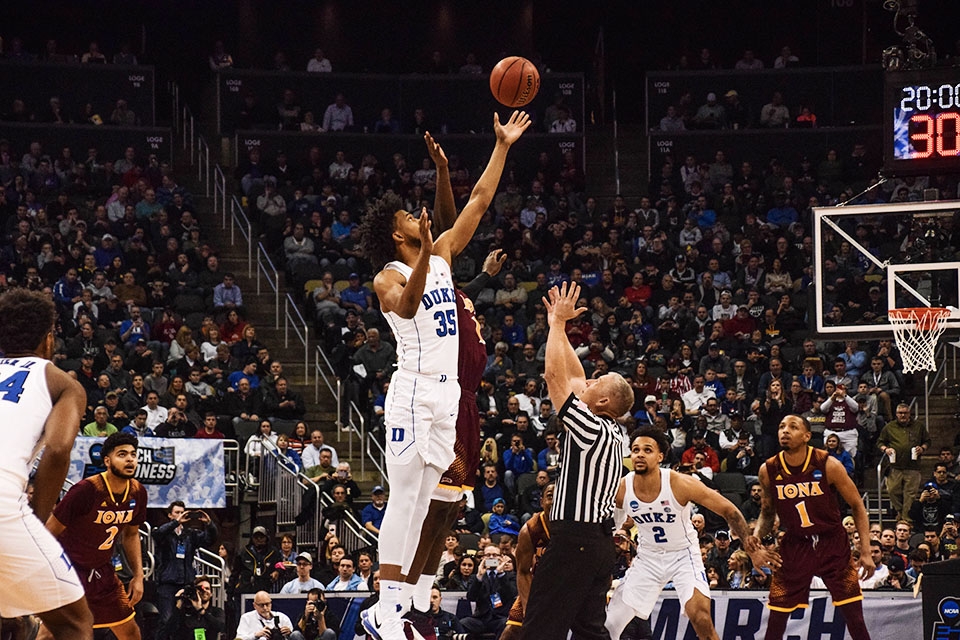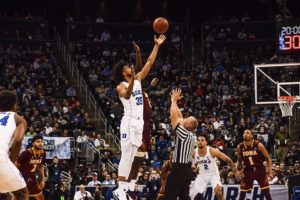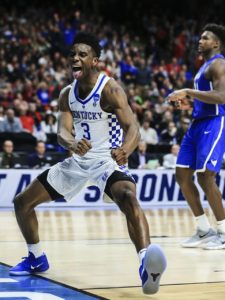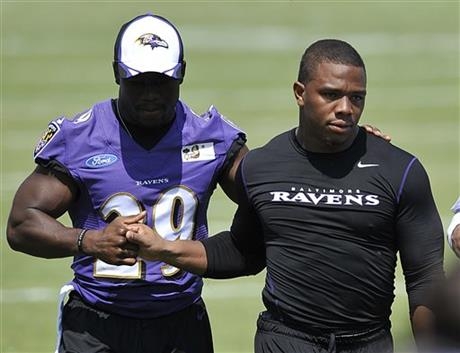

Adam Lindner | Sports Editor
03/22/2018
It largely goes without saying that one of the most futile exercises in all of human existence, let alone sports, is attempting to forecast the NCAA Tournament’s many outcomes.
However, some of March’s most memorable upsets – yes, the exact ones that busted brackets everywhere – aren’t as mind boggling as they may have initially seemed. Mid-American Conference champion Buffalo, seeded No. 13 in the South Region, topping fourth-seeded Arizona was unforeseen, but Buffalo was one of the nation’s stronger mid-major teams all season long. A 15-3 record in the MAC, partnered with a resume boasting zero non-conference losses to non-NCAA Tournament teams, is outstanding, and it would have been a shame if the Bulls had fallen in the MAC Tournament to a team less deserving of an NCAA bid.
The same can be said for the Loyola-Chicago Ramblers, who won the Missouri Valley Conference this season following Wichita State’s move to the American Athletic Conference. A solid yet under-the-radar non-league slate did nothing to raise eyebrows for the Ramblers earlier this season, but they entered the tournament as a popular upset selection as a No. 11 seed in the South Region nonetheless. Most lukewarm hoops fans probably aren’t exactly experts when it comes to the MVC, but most weren’t completely stupefied when a solid mid-major program topped a talented-yet-streaky Miami team 64-62 on March 15, either.
But a 63-62 win over No. 3 seed Tennessee in the second round two days later, thanks to a last-second jump shot to advance to the Sweet 16? Wow, OK. Getting out of the tournament’s first weekend is sometimes all it takes for certain programs to be remembered as a Cinderella for years, and the Ramblers have already done just that.
Regardless, now facing a Sweet 16 matchup with seventh-seeded Nevada on Thursday night, the Ramblers surely aren’t satisfied. “We’ve reached no finish line,” senior forward Aundre Jackson told reporters after his team’s win over third-seeded Tennessee.
But No. 16 UMBC over the tournament’s No. 1 overall seed in Virginia? What? My mind simply can’t register that.
Even in its first game without NBA prospect De’Andre Hunter, who broke his wrist prior to Virginia’s first tournament game, I simply could not understand why Virginia suddenly just couldn’t contain star UMBC guards Jairus Lyles and K.J. Maura.
Mind you, UMBC went 12-4 in one of the game’s worst conferences in the America East, and lost 83-39 at Albany on Jan. 21. The Retrievers’ best non-conference win was a 76-75 victory over Northern Kentucky on Dec. 17.
But without a go-to scorer, the Cavaliers began to look more and more defeated as the second half wore on, and with about five minutes to go in regulation, it became apparent that UMBC was seriously going to top Virginia.
So where does that leave the field as it enters the Sweet 16? The Retrievers fell in their next game to No. 9 seed Kansas State, but UMBC’s mark on the tournament has already been resoundingly made.
For one, it leaves Kentucky looking like a serious Final Four threat from the South Region. For the first time in the tournament’s history, an entire region saw a top-four seed fail to advance to at least the region’s semifinals, with No. 5 Kentucky, No. 7 Nevada, No. 9 Kansas State and No. 11 Loyola-Chicago representing the South in the Sweet 16.
Elsewhere, Villanova, Kansas and Duke look like easy picks as the eventual National Champion. Specifically, Villanova and Duke made noticeably light work of its earlier match-ups.

The West Region appears to be a complete guessing game, with Michigan entering the Sweet 16 as the region’s highest seed at No. 3.
But, with all of that being said, we simply still don’t know much of anything. Last year, seventh-seeded South Carolina reached the Final Four, and if I remember correctly, I thought No. 10 Marquette would top the Gamecocks in the first round, anyways. Sindarius Thornwell had other plans.
What the 2018 NCAA Tournament’s first few rounds have reinforced is this: No top-seeded team is as invincible as it may seem, and college basketball may have much more parity that it is given credit for.
UMBC’s upset win over Virginia is a concrete aberration, as the Retrievers would probably struggle to simply register 35 points against the Cavaliers on most occasions if the game was played at John Paul Jones Arena in Charlottesville.
But, when considering other, more sensible upsets that have happened, a lesson to be taken from this year’s tournament thus far is meant almost exclusively for the tournament’s
selection committee: Impressive mid-major programs who fail to win its conference tournament championship are more deserving of NCAA berths than middling power conference teams.
Yes, Syracuse snuck into the field as a No. 11 seed with a play-in game and now finds itself in the Sweet 16. It did the same thing in 2016, when it entered as a No. 10 seed before rattling off consecutive victories all the way to the Final Four, where it fell to North Carolina.
But those that understand that game will tell you that there’s just something about Syracuse’s sleep-inducing zone defense that somehow equates to success in March.
Both Buffalo and Loyola-Chicago’s upset victories only make the snubbing of the West Coast Conference’s 30-5 Saint Mary’s team, that was ranked in the AP Poll late in the regular season, even more of a shame. The supposed gap between decent power conference teams and sturdy mid-major squads is certainly not as wide as the selection committee seems to think it is.
I doubt that the point can be made, with a plain facial expression, that Oklahoma deserved to be in the tournament more than Saint Mary’s did.
Otherwise, the tournament reminded us all of this succinct notion: March truly is mad. Prophesying about the tournament’s various outcomes is fruitless, and March is vastly more enjoyable when one’s sole objective is to lucidly take it all in.




